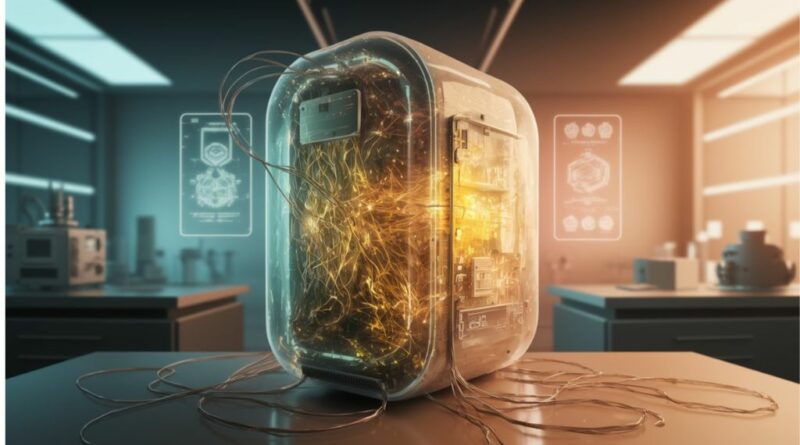The World’s First Living Biocomputer
The Pulse of Tomorrow: A Symphony of Cells and Code
Picture a computer not forged from the cold gleam of silicon or the intricate dance of circuits, but born from the very breath of life itself—living, pulsing cells. In the sun-drenched laboratories of an Australian startup, this vision is no mere flight of fancy; it is the genesis of the biocomputer, a marvel poised to rewrite the lexicon of technology. Far from the realm of science fiction, this innovation beckons us toward a horizon where biology and computation entwine. For those eager to grasp the roots of this revolution, a journey into the foundational principles of biocomputing offers an illuminating prelude.
But what, pray tell, is a biocomputer? At its heart, it is a machine that trades electrons for the subtle alchemy of life, employing biological materials—think living cells or proteins—to weave its calculations. Where traditional computers hum with the flow of electricity through wires, these organic wonders harness chemical reactions and cellular whispers to process the world’s riddles. From their base in Melbourne, a city pulsing with innovation as chronicled in its thriving tech ecosystem, this startup is crafting a “living” processor from genetically engineered cells—a feat as audacious as it is awe-inspiring.
“We’re coaxing cells into thought,” declares Dr. Evelyn Holt, a luminary at the helm of this endeavor, her words captured in the pages of Australian Tech Today. “Through the art of genetic manipulation, we teach them to dance to specific cues, yielding the answers we seek.” The secrets of this cellular sorcery unfold further in the annals of genetic engineering techniques, a testament to humanity’s growing mastery over life’s blueprint.
The possibilities unfurl like a tapestry of dreams. Unlike their silicon kin, biocomputers are chameleons—adaptable, self-healing, and undaunted by realms where electronics falter, such as the warm, chaotic depths of the human body. Envision a future where these living machines peer into our cells to diagnose ailments, deliver bespoke remedies with the precision of a poet’s pen, or stand sentinel over a polluted earth. The therapeutic promise of such marvels shines brightly in the study of cell-based therapies.
This Australian odyssey springs from the fertile soil of synthetic biology, a discipline that marries biology’s mysteries to engineering’s rigor. The startup has birthed a platform to sculpt custom cellular circuits—miniature computers woven from the stuff of life itself. Their labours ripple through the scholarly world, finding a home in the prestigious Nature Biotechnology journal, where the curious can delve deeper into synthetic biology research.
Among the biocomputer’s most dazzling gifts is its flair for parallel processing. While traditional machines trudge through tasks in linear procession, these cellular symphonies perform a chorus of computations at once, their myriad cells harmonizing in unison. Such power could unlock solutions to enigmas that defy us yet, a prospect illuminated by the study of parallel computing architectures.
Yet, to conjure a living computer is to wrestle with titans. Stability and reliability remain elusive quarry, and the startup labours to craft interfaces as intuitive as a whispered secret, inviting researchers to program these organic minds. The road’s trials and triumphs are laid bare in explorations of challenges in biocomputer development.
Still, progress marches on. The team has already summoned simple biocomputers capable of humble feats, their sights now set on grander designs. The implications ripple outward—a future where these living engines birth new medicines, tailor cures to the individual soul, or fashion materials to cradle a weary planet. This Melbourne marvel stands at the vanguard, its work a clarion call to a world on the cusp of transformation.
For the intrepid, the broader saga of biological computing research beckons, while tales of kindred spirits unfold in a survey of Australian tech startups. The fuel for such ventures flows from the wells of biotech startup funding in Australia, a lifeline for these pioneers.
Though the biocomputer yet lingers in its infancy, its promise gleams like dawn over the outback. This Australian endeavour is not merely building machines—it is sowing the seeds of a future where the line between life and computation blurs, and the pulse of cells becomes the heartbeat of progress.



